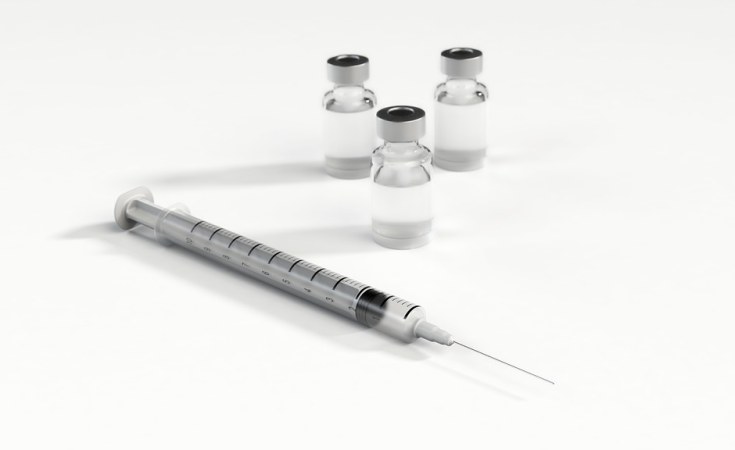The prevalence of HIV among Rwandans aged 15-64 is 3 percent.
The Rwanda Biomedical Centre (RBC), will by the end of this month, introduce an injectable drug for the prevention of HIV as part of its HIV/AIDS programme.
Such preventive drugs, known as pre-exposure prophylaxis (PrEP), are a form of medication used to prevent HIV infections. Specifically, PrEP refers to the use of antiretroviral medication by HIV-negative individuals to reduce the risk of acquiring the virus.
ALSO READ: Rwanda should consider manufacturing ARVs -- expert
The drug Rwanda plans to roll out is the long-acting injectable Cabotegravir (CAB-LA), an intramuscular, long-acting form of PrEP. The first two injections are administered four weeks apart, followed by an injection every eight weeks.
Dr Basile Ikuzo, the Director of the HIV Prevention Unit at RBC, highlighted that all health centres and hospitals in the country provide HIV prevention services free of charge. Additionally, he noted that some private health centres also offer such services at no cost.
In an interview with The New Times, Dr Ikuzo explained that CAB-LA will initially be introduced on a pilot basis at two health centres in the country. Following this pilot phase, it could be scaled up nationwide.
As the government prepares for the rollout, here are a few key points you need to know about the drug and its planned introduction:
1. Approved by the WHO in 2022
The World Health Organisation (WHO) released new guidelines in 2022 for the use of CAB-LA as pre-exposure prophylaxis (PrEP) for HIV. The organisation encouraged countries to consider "this safe and highly effective prevention option for people at substantial risk of HIV infection."
The guidelines aim to support countries planning for the introduction of CAB-LA as part of a comprehensive approach to HIV prevention and to facilitate urgently needed operational research.
"Long-acting cabotegravir is a safe and highly effective HIV prevention tool but isn't yet available outside study settings," said Dr Meg Doherty, Director of WHO's Global HIV, Hepatitis, and Sexually Transmitted Infections Programmes.
2. Addressing the challenge of adherence to oral PrEP
"We observed challenges with adherence to oral PrEP, and we believe injectable PrEP could be a solution," Dr Ikuzo said.
"We are planning to start piloting it in two health centres to assess client acceptability and determine if it can be used as a new intervention. If the acceptability rate is high, we will scale it up across the country," he added.
ALSO READ: HIV stigma: The ordeal of losing opportunities
With CAB-LA, individuals take a single dose once every two months, shifting from the need for daily pills to a bi-monthly injection.
3. Targeting high-risk groups such as sex workers
PrEP is typically targeted at high-risk groups, such as female sex workers and discordant couples. Dr Ikuzo told The New Times that CAB-LA will be rolled out in December 2024 or January 2025.
The country already has doses available, and teams trained to administer the injections are in place.
The injection is administered at health centres, with clients returning every two months for subsequent doses.
Oral PrEP has been used for years in Rwanda, with at least 30% of individuals in high-risk categories currently on the medication. In total, over 10,000 people in Rwanda use PrEP.
According to Dr Ikuzo, such measures have contributed to a decline in new infections and HIV prevalence among high-risk groups. For instance, the prevalence among female sex workers has dropped from 45 percent about a decade ago to 35 percent currently.
ALSO READ: FEATURED: AEE Rwanda marks World AIDS Day with HIV prevention campaign in Gasabo
There were 1.3 million new HIV infections globally in 2023.
The Rwanda Population-based HIV Impact Assessment (RPHIA), a comprehensive country-wide survey conducted in 2019, showed that the prevalence of HIV among Rwandans aged 15-64 is 3 percent.
The WHO has targets that by 2025, 95 percent of all people living with HIV should have a diagnosis, 95 percent of those should be taking lifesaving antiretroviral treatment (ART) and 95 percent of people living with HIV on treatment should achieve a suppressed viral load for the benefit of the person's health and for reducing onward HIV transmission.
Rwanda is one of the countries that have made significant achievements in managing HIV/AIDS, having reached the "95-95-95" target set by the Joint United Nations Programme on HIV/AIDS (UNAIDS).


